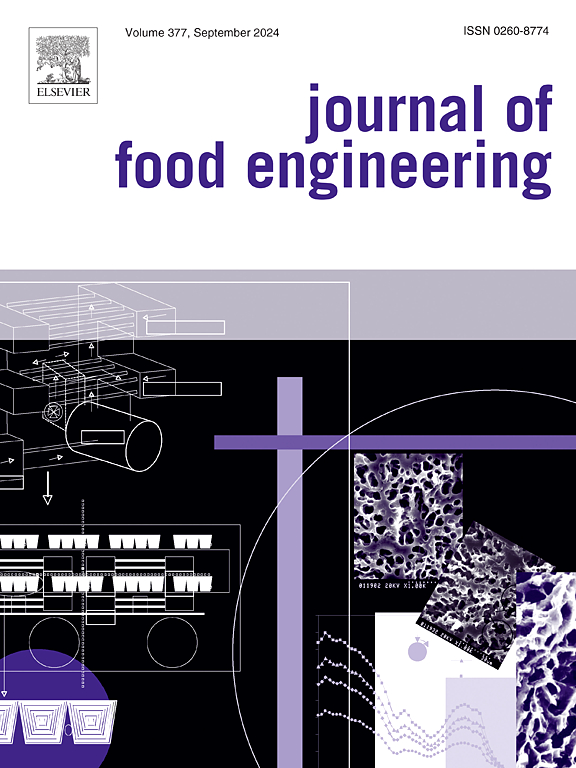An experimental and molecular dynamics analysis of Listeria monocytogenes inactivation in peach puree influenced by moderate electric field and temperature
IF 5.8
2区 农林科学
Q1 ENGINEERING, CHEMICAL
引用次数: 0
Abstract
Nonthermal food preservation methods are increasingly recognized for their potential, with moderate electric fields (MEF) identified as a viable alternative. This study explores the synergistic effect of MEF and temperature on the inactivation of Listeria monocytogenes in peach puree. An electro-processing device was employed to minimize ohmic heating and improve cooling during electric field application. Inactivation was investigated at a field strength of 105 V/cm and isothermal treatment temperatures of 45 and 50 °C, with results compared to corresponding control treatments performed without electric field application. The results revealed a significant (P ≤ 0.05) increase in inactivation induced by MEF at 50 °C within the initial 10 min of treatment, while at 45 °C, a comparable effect was noted only after 20 min of MEF exposure. Moreover, a reduction exceeding 5-log10 was achieved with MEF treatment at 50 °C for durations exceeding 10 min. Molecular dynamics analysis also demonstrated the effectiveness of the combined influence of electric field and temperature on electroporation and membrane lipid dynamics, with a significant (P ≤ 0.05) enhancement observed at 50 °C. The results of the present study highlight the applicability of MEF processing technology to fruit-based matrices.
中等电场和温度对桃果泥中单核增生李斯特菌失活的实验和分子动力学分析
非热食品保鲜方法因其潜力越来越受到人们的认可,适度电场(MEF)被认为是一种可行的替代方法。本研究探讨了MEF和温度对桃果泥中单核增生李斯特菌灭活的协同作用。在电场作用过程中,采用了一种电处理装置来减少欧姆加热和改善冷却。在105 V/cm的电场强度和45°C和50°C的等温处理下进行失活研究,并将结果与不施加电场的相应对照处理进行比较。结果显示,MEF在50°C处理的10分钟内诱导的失活显著(P≤0.05)增加,而在45°C处理的20分钟后才出现类似的效果。此外,在50°C下,MEF处理时间超过10分钟,减少量超过5-log10。分子动力学分析也证明了电场和温度对电穿孔和膜脂动力学的联合影响是有效的,在50°C下观察到显著(P≤0.05)增强。本研究的结果突出了MEF加工技术在水果基基质中的适用性。
本文章由计算机程序翻译,如有差异,请以英文原文为准。
求助全文
约1分钟内获得全文
求助全文
来源期刊

Journal of Food Engineering
工程技术-工程:化工
CiteScore
11.80
自引率
5.50%
发文量
275
审稿时长
24 days
期刊介绍:
The journal publishes original research and review papers on any subject at the interface between food and engineering, particularly those of relevance to industry, including:
Engineering properties of foods, food physics and physical chemistry; processing, measurement, control, packaging, storage and distribution; engineering aspects of the design and production of novel foods and of food service and catering; design and operation of food processes, plant and equipment; economics of food engineering, including the economics of alternative processes.
Accounts of food engineering achievements are of particular value.
 求助内容:
求助内容: 应助结果提醒方式:
应助结果提醒方式:


